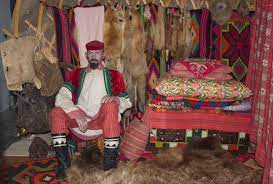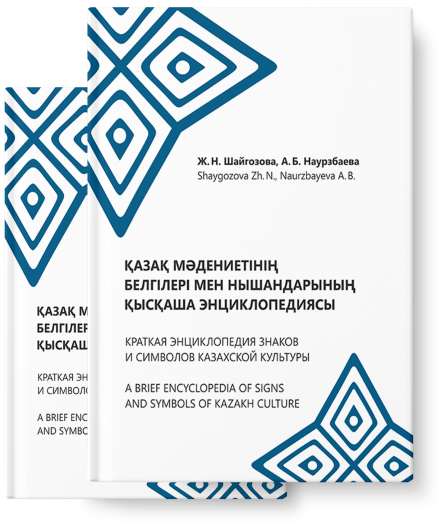
A short encyclopedia of
Signs and symbols of
Kazakh culture

The cosmogonic universe of the space division “right-left” has a bright reflection in the Turkiс yurt. Kazakh people calles the right side “oñ zhaq”, it belongs to the male and is considered sacred. This is confirmed by the “logic” of Kazakh ritual and ethical-normative culture. Thus, when the bride enters the groom’s yurt for the first time, she first goes to the right side. And she enters the threshold only with her right foot. The birth took place on this side, where the deceased was washed and dress deceased.
The peculiarity of the right side in Kazakh culture is underlined by the phraseology “aiyn oñinan tudy” (literally “a month was born on the right side”), which means “to reach the goal”, “to be lucky”, etc. The same phraseology sounds like the Bata blessing – “Aiyn oñynan tusyn”! (“May the moon be born on the right side!”).

There is another expression: “oñ zhaqtyn kyzyğyn kördi” (“saw, knew joys, pleasures of the right side”). This is said about a dead woman who lived a good life. Recognition of the special importance of the right side is characteristic of many cultures of the world: it has the value of the good, righteous, and the left side – negative, feminine. In Slavic culture it is believed that the right side of man is guarded by the guardian angel, while the left side protects the demonic tempter. Belarusians sat at the memorial table only as follows: women on the left side and men on the right, the landmark here is the entrance/door.
On the right side of the yurt were men’s utensils (attributes) – hunting equipment, horse saddles, horse harnesses and other accessories for male activities. Many of these attributes have a protective function. For example, a knife was placed in the cradle of an infant, a kamcha whip is an active participant in the boots, and the horse harness was never given to anyone else. The female half of the yurt is left (sol zhaq), which in daily life men do not pass. On this part of the yurt were household goods: crockery, cupboards, etc.

